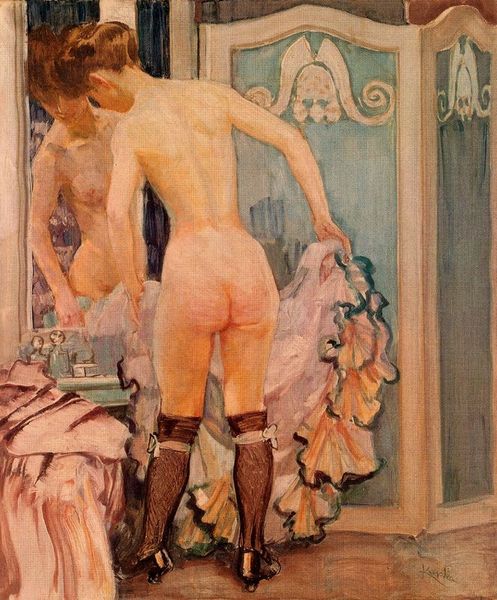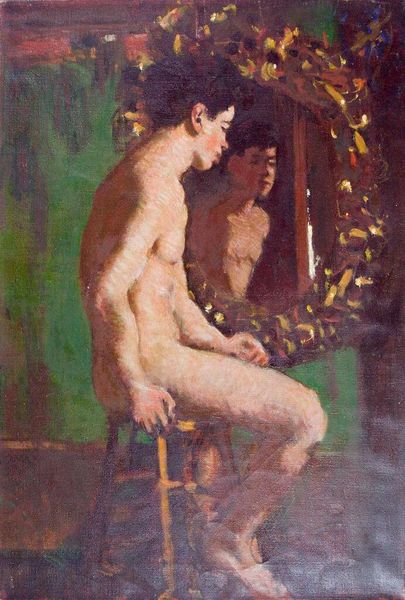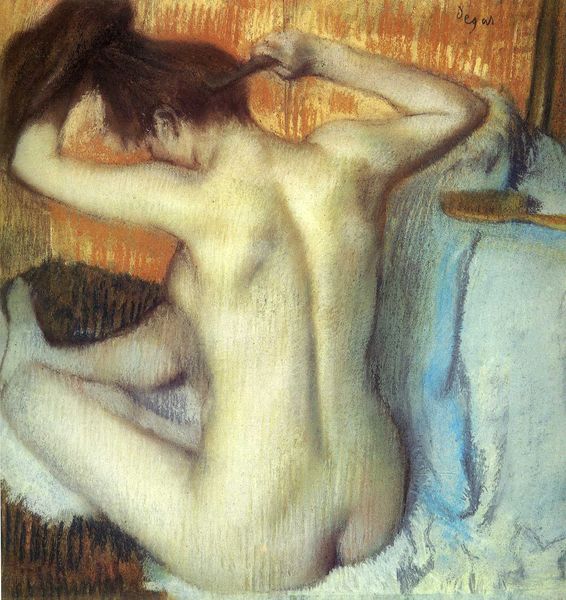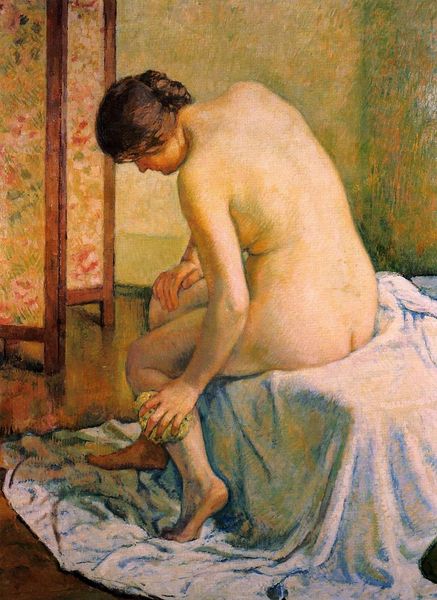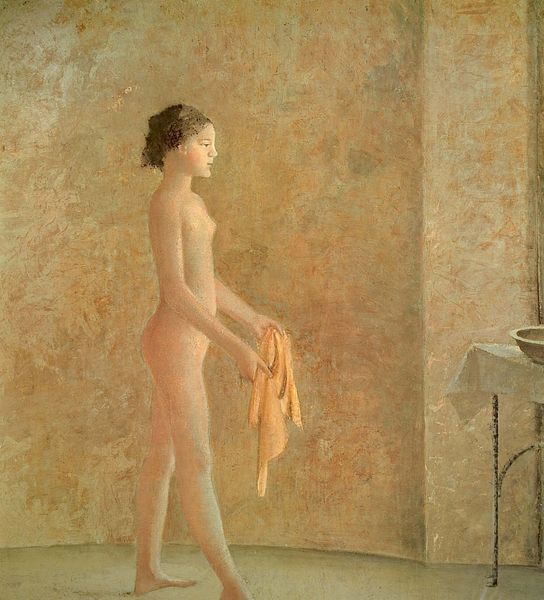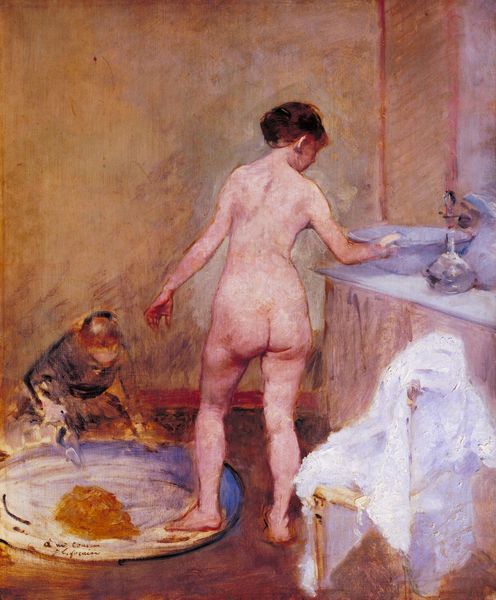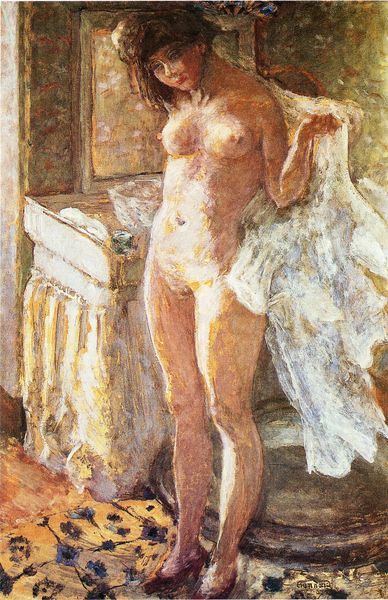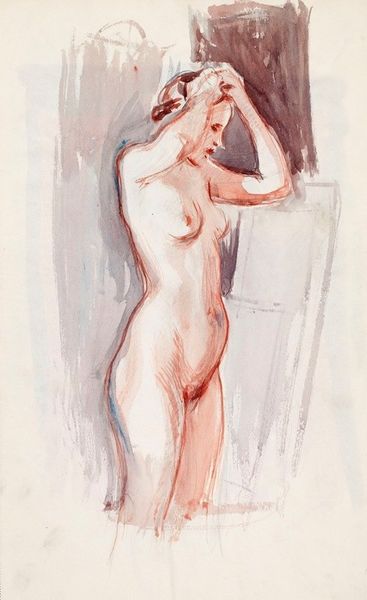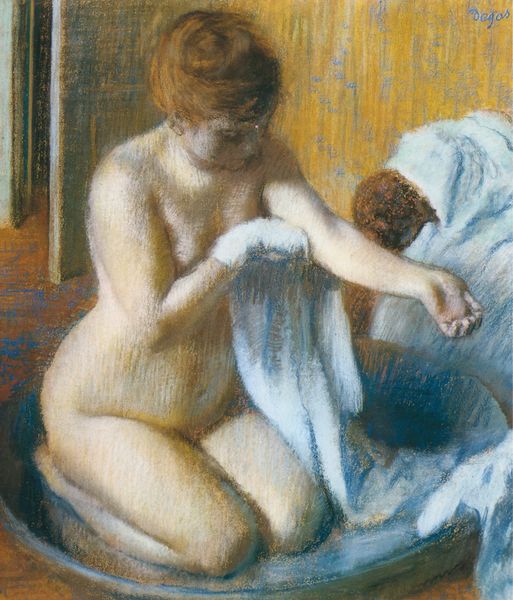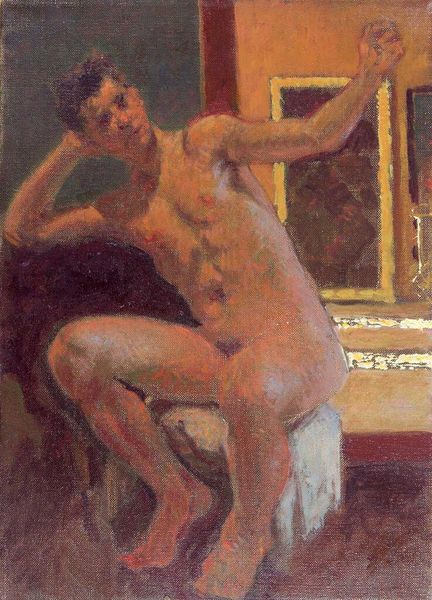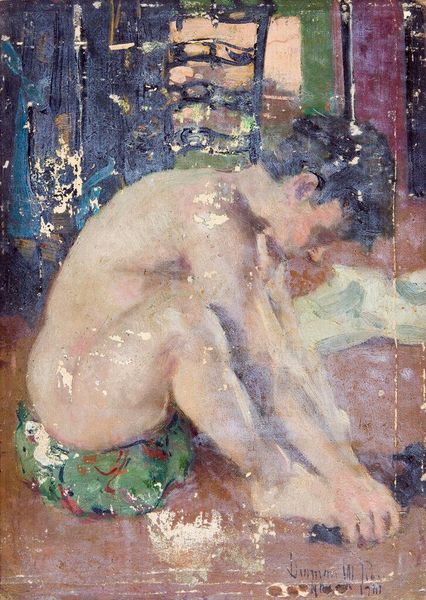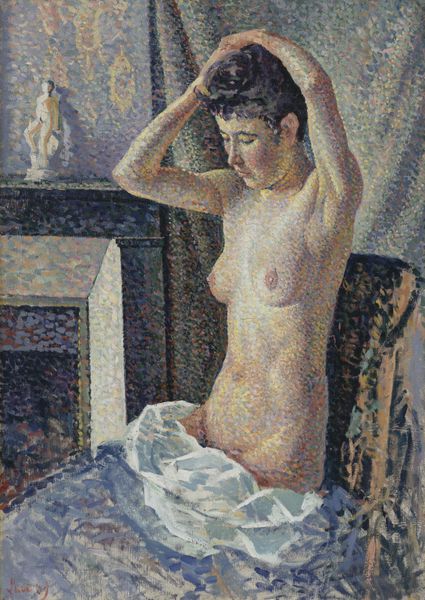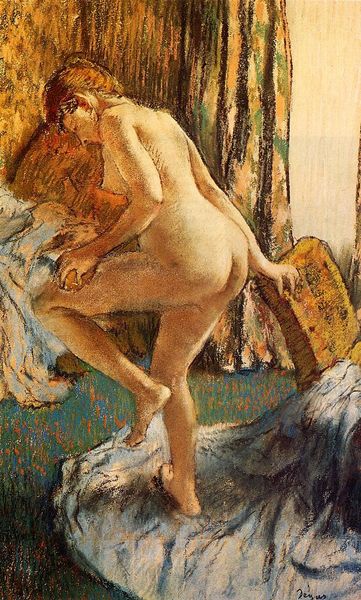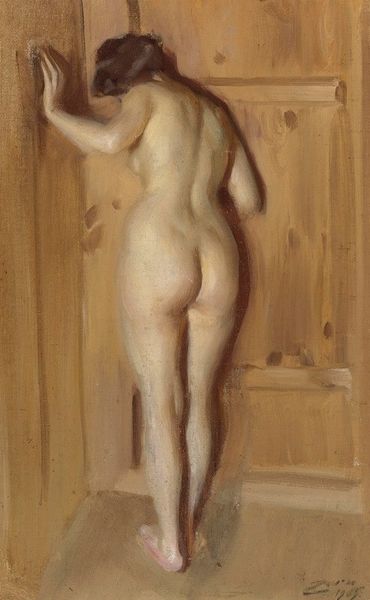
oil-paint
#
portrait
#
impressionism
#
oil-paint
#
oil painting
#
female-nude
#
nude
#
realism
Copyright: Public domain
Editor: This is "The Tub" by Anders Zorn, painted in 1888 using oil paint. It feels so intimate, like catching a private moment. What jumps out at you when you look at it? Curator: The mirror is particularly intriguing. It is not simply a reflective surface but a visual portal to different aspects of the self. Notice how the figure in the reflection meets her own gaze, almost defensively. Editor: That’s an interesting point. It’s not a typical voyeuristic nude. Curator: Precisely. The tub itself can be seen as a symbol, representing purification, cleansing, or even rebirth. Water carries considerable emotional and spiritual significance across cultures, often linked to transitional phases and rejuvenation. Editor: Rebirth… I never thought about it that way. But the positioning of the figure with her back to the viewer... Curator: Ah, that’s crucial. Consider the cultural context; in many societies, the unveiled female form represented fertility, allure, or vulnerability. By obscuring her face, Zorn subtly shifts the focus, perhaps questioning these societal constructs. Do you think there might be any tension there? Editor: Yes, the intimacy clashes with the obscured view, creating a push and pull. Like we are allowed into the space but not fully into her experience. Curator: And the steamy atmosphere, the hazy impressionistic brushstrokes - all of these create a dream-like state that further encourages the interpretation. Do you feel any of that? Editor: I do now! Thank you! Seeing how the reflection, the water, and even the obscured face work together really opens up a deeper reading of this artwork. Curator: Indeed! Art like this reveals layers of meaning that resonate long after the initial viewing. It sparks dialogue not just about the artwork, but about ourselves and the world we perceive through it.
Comments
No comments
Be the first to comment and join the conversation on the ultimate creative platform.
